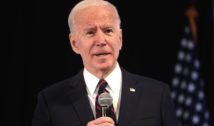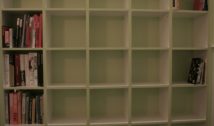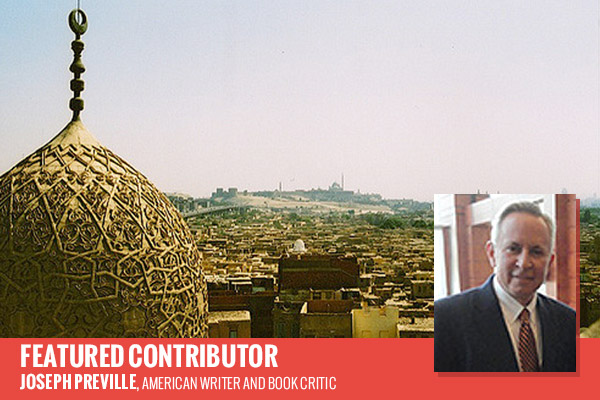
Interview with Author Nicolas Pelham on ‘Reviving Pluralism in the Middle East’
- By Joseph Preville --
- 27 May 2016 --

Featured Contributors Joseph Preville and Julie Poucher Harbin interview Nicolas Pelham about his new book, Holy Lands: Reviving Pluralism in the Middle East.
Written by Joseph Preville and Julie Poucher Harbin for ISLAMiCommentary
How did the rise of nation-states in the 20th century doom religious diversity and pluralism in the Middle East? And, can pluralism be recovered to heal and transform the Middle East? Veteran journalist Nicolas Pelham considers these questions in his thought-provoking new book, Holy Lands: Reviving Pluralism in the Middle East (Columbia Global Reports, 2016).
Interview with Author Nicolas Pelham on ‘Reviving Pluralism in the Middle East'[/tweetthis]
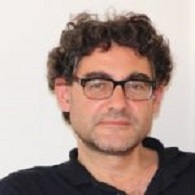
Pelham writes that his new book “is born of the gnawing question of how a region that for half a millennium was a global exemplar of pluralism and religious harmony has become the least tolerant and stable place on the planet.” He looks at the causes of the Middle East’s descent into a fractured league of embattled states with exclusivist claims over land and borders.
Nicolas Pelham discusses his new book in this interview.
You write that your career as a writer and journalist in the Middle East, beginning in the 1990s “was born of the thrill of the region’s diversity.” What do you mean by that and how did you get started as a writer and journalist specializing in the Middle East?
From the outside Westerners are raised to conceive of the region as “the other.” The first we learn about its peoples are in our history books through the prism of the Crusades. We study the Middle East as a place of war and conflict, where the present, as relayed in news bulletins, only confirms the past. And yet on the ground, the region I first experienced was so very different. In Damascus, where I learned Arabic, there was no one “other” – just a kaleidoscope of cosmopolitan cultures and sects whose various believers rubbed shoulders in what was seemingly a time-honored natural order. I was there just as the iron curtain was falling and sweeping aside such autocratic rulers as Nicolae Ceausescu. There were many predictions of what would happen to Syria. The notion that the region’s sects might tear each other apart seemed the most fanciful.
A couple of years later I was back in Cairo trying to fund my way through a course at Cairo University law faculty. Within days I found myself side-tracked into working for a local English-language paper, the Middle East Times, and law college fell by the wayside. Al-Jihad and al-Gama’a al-Islamiya were just beginning to launch their first low-level insurgency – how innocent the occasional pot-shot at Copts or western tourists seems in comparison to today’s bloodied times. But it was a foretaste of the religious wars that were set to sweep the region.
One reviewer called your book “a sound, accessible argument for why returning to the mixed-faith communities living among each other in the Ottoman model might just save the Middle East.” Explain how the Ottoman millet system — diverse religious communities living side-by-side in shared spaces with collective management — worked and how it promoted religious pluralism.
In hindsight, the Ottoman ability to manage a vast empire extending from the gates of Vienna to the tip of Arabia and from the Atlas mountains to Bahrain seems a phenomenal feat. They had no electronic communications to span the region, and in much of their Empire Muslims were ruling over a Christian majority. And yet for six centuries the Ottomans governed and maintained a remarkably stable, harmonious and prosperous common market that could not be more at odds with todays’ turmoil. They did so by delegating power to religious leaders and to government their respective millets or religious nations. From their seat in Istanbul, Caliphs, patriarchs and chief rabbis ruled their flocks, maintaining order through their own religious courts and raising taxes. But while they ruled over people, they did not rule over land. They governed holy communities, not holy lands. Religious communities shared the same neighborhoods, the same market places, and often — given their own overlapping religious traditions — the same holy places. And because their religious authority spanned the breadth of the Empire itself, the outlook of the multiple faiths was remarkably universal, inclusive and pluralist.
Many would argue that it’s too late to go back to the Ottoman model, with several non-Muslim communities having been driven far from their homes – starting with the post-World War I formation of nation-states and subsequent “un-mixing.” More recently, a once-thriving Jewish community in Iraq, for example, has all but disappeared and the Christian communities in Iraq and Syria have been displaced by war. What makes you think it’s possible to return to the way it was during the Ottoman period?
There have been repeated attempts over the past hundred years to carve up the Ottoman Empire into sectarian homelands, but all have failed to resolve conflicts their proponents claimed they would. To the contrary, experiments with partition — be they a Jewish homeland, a “Shiastan” or ISIS- manufactured “Sunnistan” — have displaced tens of millions and only served to deepen and distend the region’s multiple sectarian conflicts.
Often the dislocation seems only to add to the overlap. Jewish communities from Baghdad and across the region were uprooted from one Muslim part of the region and replanted in another. Even today much of, perhaps the majority of, Israel’s territory – the Galilee and the Negev – remains majority Muslim.
Sunnis fleeing Aleppo’s siege gravitated to the Mediterranean coast, which Alawites consider their stronghold. Hundreds of thousands of Sunnis from Anbar and Nineveh provinces have sought refuge in Baghdad and southern Iraq undermining the aspirations of those politicians and militia commanders who sought a “Shiastan.”
Nicolas Pelham on ‘Holy Lands: Reviving Pluralism in the Middle East’ (Book Q & A) https://t.co/xrUDNEZ2T8 @josephpreville
— Julie Poucher Harbin (@julieblog) May 23, 2016
Moreover, even if somehow the region’s religious communities could magically congeal into separate enclaves it is questionable whether the region would find peace. The grievances of those dispossessed by partition will remain unaddressed. And the record suggests that turning universal religious communities into land-cults only heightens their xenophobic, chauvinistic tendencies, increases their fear of existential threats and propels them into conflict with their neighbors.
But inclusivity drawing on past values is not only a prerequisite for resolving conflicts. The economic imperative is also a driver. If the region’s leaders are really to transform their realms from rentier states into sustainable and productive economies they will need to trade with and ultimately live with their neighbors, whatever their sect. Finally, across the region sectarian leaders are struggling to maintain popular support for their narratives. The number of Iraqis voting for anti-sectarian parties is increasing exponentially — by millions of voters — with each election. Not least because it has failed to deliver, factionalism is losing its appeal in much of the region.
Would a re-drawing of post-World War I borders, as some have suggested, facilitate more mixed communities or further segregate them? What would you advocate?
Ultimately, it matters less what the borders are than what the policies are holding sway within them. If the Middle East’s many states were led by rulers who ensured religious and sectarian pluralism; divvied up posts and budgets, resources, and development land equitably amongst representatives of all faiths; and ensured equal rights for family reunification and access and movement across and within their borders to all sects, their societies would be more far harmonious.
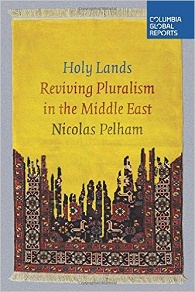
At the same time, sectarian states remain fiercely protective, and tightly guard their borders. In the short-to-medium term, perhaps the most that can be hoped for is that driven by economic necessity they can be encouraged to establish trade ties and facilitate cross-border access and movement. Ultimately conflict resolution will come through a muddying of boundaries not through greater partition.
External powers working for conflict resolution should also do more to heed and include religious leaders. Not only do they wield vast popular mandates which can be deployed either to sanction agreements or spoil them, but they have inherited traditions which, honed over centuries, have a track-record of preserving an inter-faith modus vivendi. Unlike Christendom in Europe which annihilated its sects, Islam preserved them. Indeed that is why so many ancient indigenous sects survive to this day. Above all, religious leaders can be highly effective in propounding the message that the current bloodletting is not a historical aberration but a betrayal of the religious values of tolerance and inclusivity the region has upheld for centuries.
Finally I would pay greater attention to Saudi Arabia. Outside the kingdom is often vilified as a cauldron of religious troubles which frequently boils and bubbles beyond its borders. Yet for all the Wahhabi command of public space, the kingdom has preserved much of its diverse religious mix. If the kingdom could project its reach less by sponsoring one sect against others, but engaging all the multiple sects with which it maintains relations internally, the region would be a happier place.
“Ultimately conflict resolution will come through a muddying of boundaries not through greater partition.”
Are you hopeful that Jews and Muslims can live together again in peace in Israel/Palestine as they did before the Balfour Declaration?
In Holy Lands I write about the city of Safed which used to be a thriving medieval staging post between Damascus and the Mediterranean and is now a dead-end in the Upper Galilee. Until 1948, Safed conformed to the regional norm, that is to say it was a city shared by Muslims and Jews, and was particularly well-known for the medieval mystical and erotic verse of its Jewish and Muslim poets. In 1948 all that disappeared. The mayor proudly showed me the home-made mortar gun that chased the town’s Muslim Palestinians away and still stands on a plinth in the town’s central plaza. But though the mayor calls it a miracle, three generations on it has still left his all-Jewish town feeling half empty. Successive mayors have made various attempts to fill it. They have turned mosques into art galleries, and renamed vacated neighborhoods Artists or Breslev quarters hoping to attract Bohemian, ultra-orthodox and young Diaspora Jews to the town. Only when these fell short of the mark did the mayor reach out to the surrounding Palestinian villages of the Galilee and open vocational colleges for their youth. Today thousands of Israeli Palestinians fill its streets, and something of the spirit of Safed is coming back. Problems and animosities abound particularly when Israel’s leaders launch offensives on the occupied territories. The mayor will still not sanction the opening of the delightful Mamluk Red mosque. But ultimately, Israel’s own zoning restrictions on over-crowded and under-resourced Palestinian towns in Israel are pushing Palestinians to upgrade their living conditions in parts of the country Israel hitherto treated as exclusively Jewish. That mixing is fostering a new and interesting dynamic which one day might start to challenge modern divides.
What advice would you give to aspiring writers and journalists who wish to focus on the Middle East?
Hold true to the Prophet’s aphorism, ultimately the pen is mightier than the sword.
ISLAMiCommentary is a public scholarship forum that engages scholars, journalists, policymakers, advocates and artists in their fields of expertise. It is a key component of the Transcultural Islam Project; an initiative managed out of the Duke Islamic Studies Center in partnership with the Carolina Center for the Study of the Middle East and Muslim Civilizations (UNC-Chapel Hill). This article was made possible (in part) by a grant from Carnegie Corporation of New York. The statements made and views expressed are solely the responsibility of the author(s).
This article originally appeared on ISLAMiCommentary.















